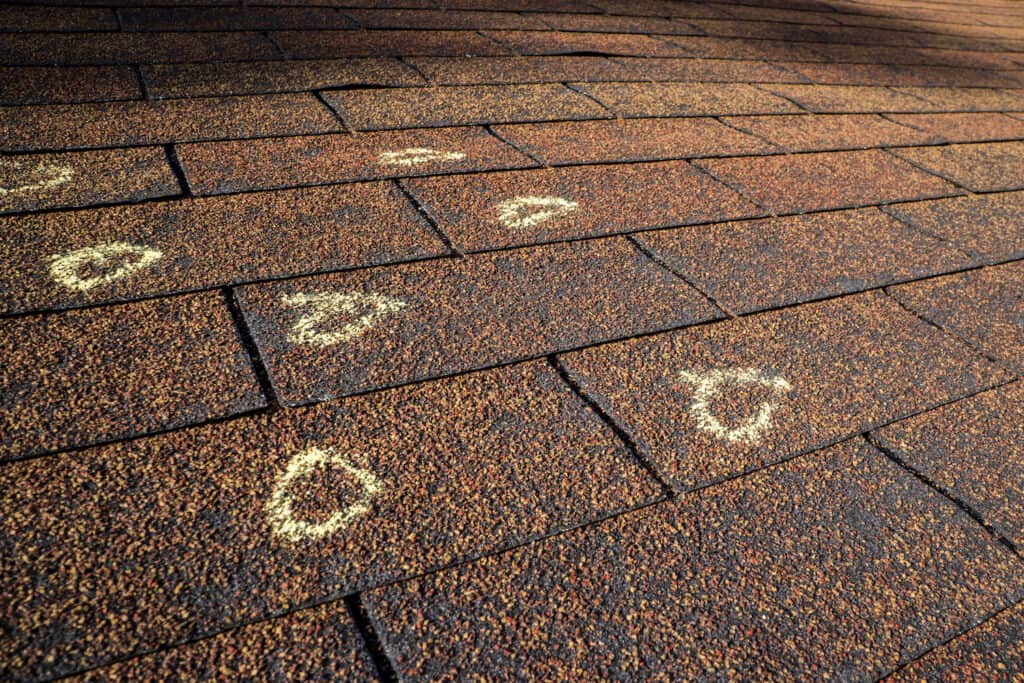Roof shingle blisters are a common issue that homeowners may encounter on their roofs. These blisters appear as raised, bubble-like formations on the surface of the shingles. While they may seem like a minor cosmetic concern, roof shingle blisters can lead to more significant problems if left unaddressed. In this article, we will explore the causes, effects, and potential solutions for roof shingle blisters, helping homeowners understand and resolve this issue effectively.

Understanding Roof Shingle Blisters:
Roof shingle blisters are small, bubble-like formations that can develop on the surface of asphalt shingles. These blisters are typically filled with moisture or trapped air. They may vary in size, ranging from tiny blisters to larger ones that are several inches in diameter. This damage can occur on both new and old roofs and may affect individual shingles or larger sections of the roof.
Causes of Roof Shingle Blisters:
Several factors can contribute to the formation of roof shingle blisters:
- Moisture Trapped during Installation: If moisture becomes trapped between the layers of the shingles during installation, it can lead to blister formation over time.
- Excessive Heat or Sun Exposure: High temperatures and prolonged sun exposure can cause the asphalt in the shingles to soften and expand, resulting in blister formation.
- Poor Roof Ventilation: Inadequate roof ventilation can lead to excessive heat buildup in the attic, which can transfer to the shingles and contribute to blister formation.
- Manufacturing Defects: Occasionally, manufacturing defects in the shingles themselves can contribute to the development of blisters.
Effects:
While roof shingle blisters may initially seem like a cosmetic issue, they can have more significant effects on the roof’s performance over time:
- Reduced Lifespan: Blisters weaken the integrity of the shingles, making them more susceptible to damage and reducing their overall lifespan.
- Increased Vulnerability to Moisture: Blisters create pockets where moisture can collect, leading to potential water infiltration and subsequent roof leaks.
- Accelerated Aging: The expansion and contraction of the blisters due to temperature fluctuations can accelerate the aging process of the shingles, making them more prone to cracking and further damage.
Solutions:
Addressing this damage requires careful inspection and appropriate solutions:
- Inspection and Assessment: Begin by inspecting the roof for the presence and extent of blistering. Evaluate the overall condition of the shingles and identify any signs of water damage or leaks.
- Roof Repair or Replacement: Depending on the severity and extent of the blistering, repair or replacement of affected shingles may be necessary. In some cases, a localized repair by removing the blistered shingles and replacing them with new ones may suffice. In more severe cases, actively requiring a complete roof replacement may be necessary.
- Improving Roof Ventilation: Enhancing roof ventilation can help reduce heat buildup in the attic and minimize the risk of blister formation. This can actively be achieved through actively installing ridge vents, soffit vents, or attic fans.
- Consultation with Roofing Professionals: Consult roofing professionals to assess the blistering extent and determine the appropriate course of action. They can provide expert advice and perform the necessary repairs or replacements.
Conclusion:
Roof shingle blisters are a common roofing issue that can lead to significant problems if left unattended. Understanding the causes, effects, and solutions for this damage is essential for homeowners. Regular inspections, prompt repairs or replacements, and improved roof ventilation help mitigate blister formation and maintain roof integrity. Consult with roofing professionals for proper assessment and effective solutions.



Leave a Reply